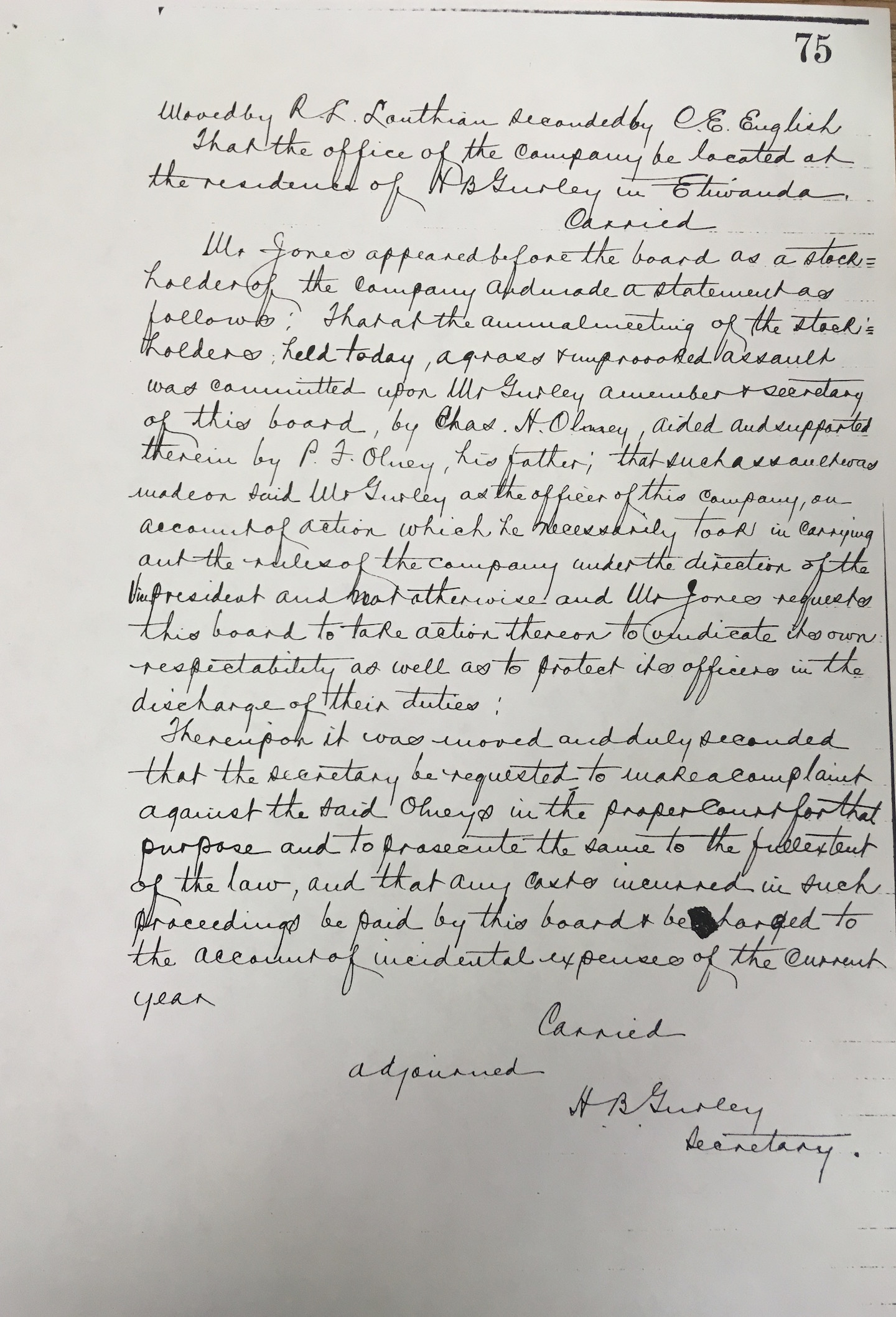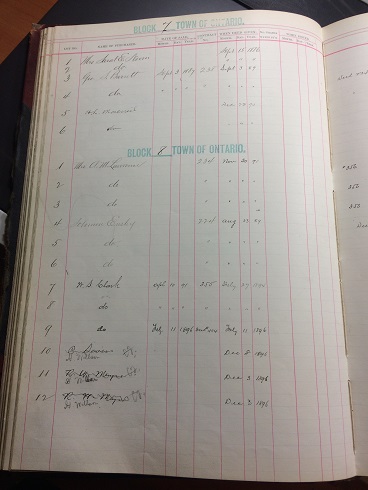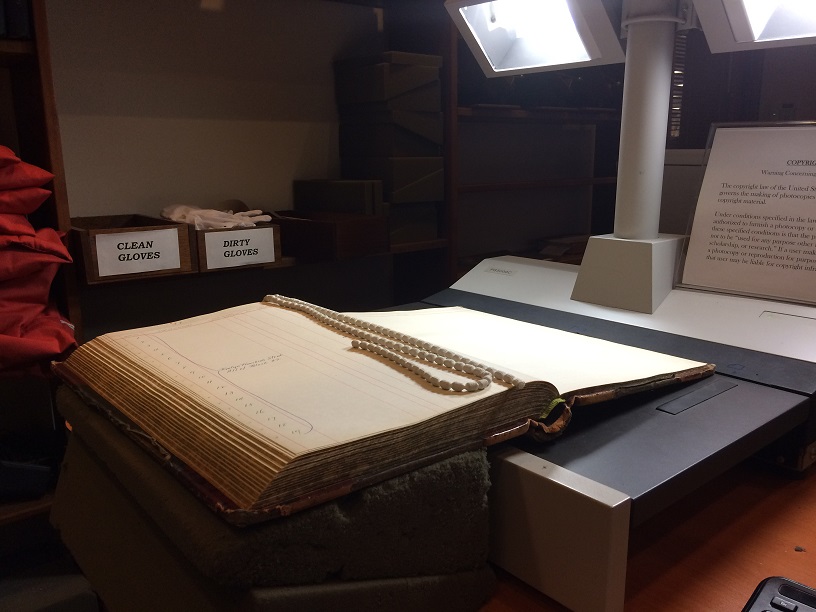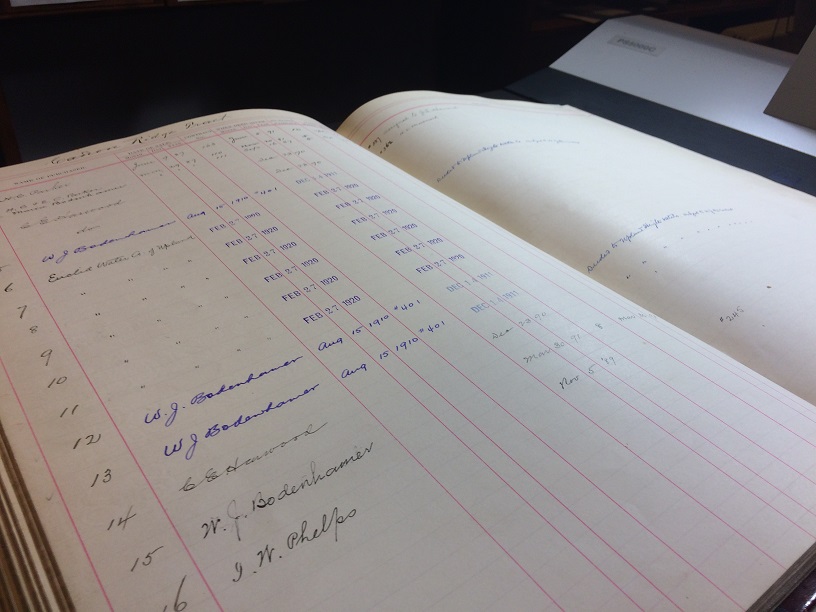So, I’ve been working on the same piece for a while now (the Chaffey Letters from the Ontario City Library that I mentioned in my last blog post) and I’ve been thinking about the work we do by digitizing these documents. The Chaffey Letters are composed of very thin and fragile paper that over time have begun to rip and degrade. As you can see in the picture, the paper has ripped in the sections that were written with ink. The ink was perhaps a very potent and thick ink because it has smudged heavily, making the beautiful handwriting a bit unreadable, but it is also the only parts on the paper that have ripped (it makes for quite an interesting image, aesthetically).

Some of the only words I have been able to distinguish have been the sign off of almost each letter: “Yours Truly, Chaffey” the last word I cannot completely distinguish. I, personally, think it looks as though it says “bro” but considering these are documents from The Ontario Colony Land Company I think I might be just a little off (just a little).
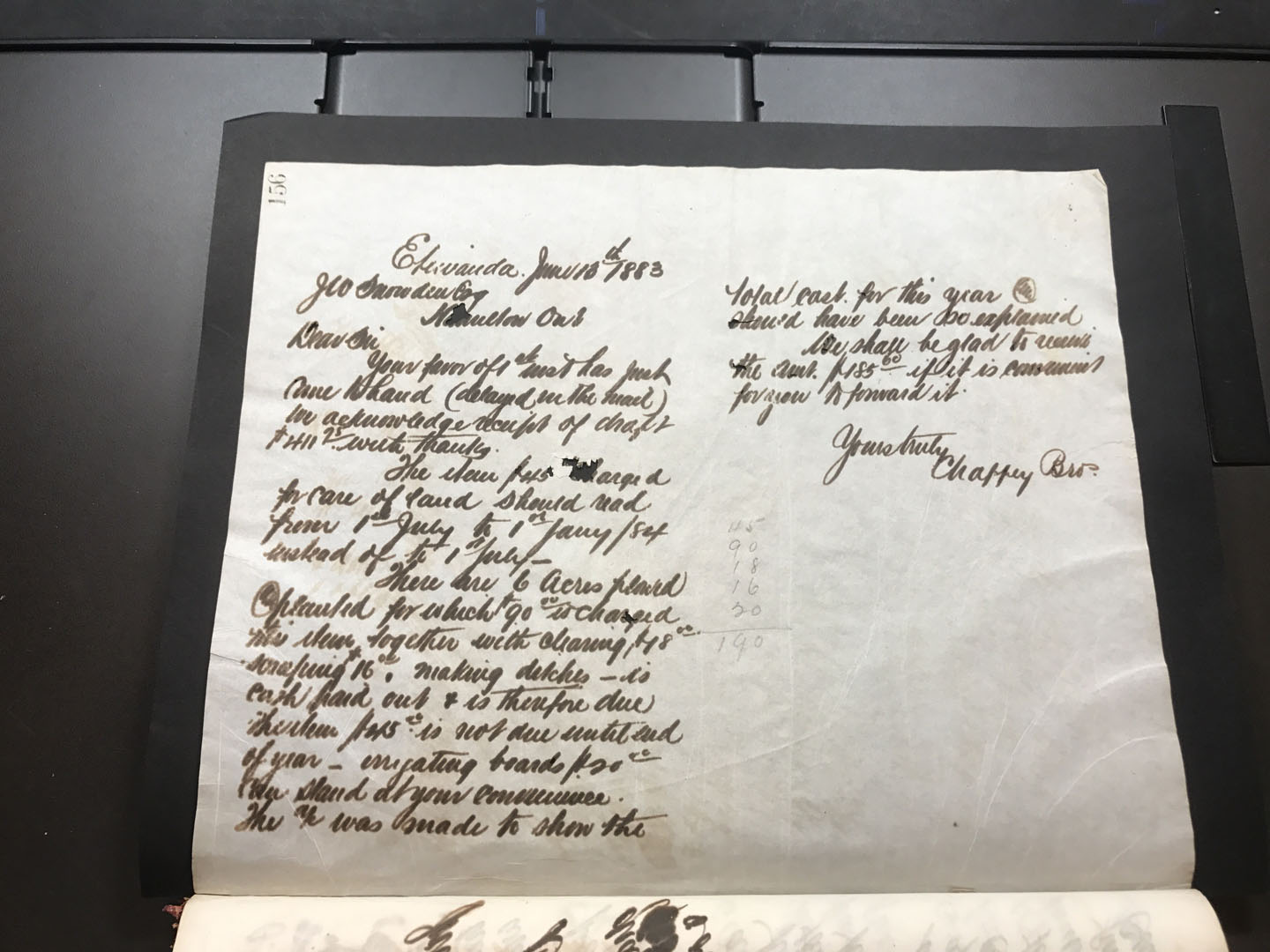
To continue what I first said, I have been thinking about what digitizing does for sources like these and people who access them.
Without the work of the CLIRWater project and those alike, the fast-paced modern world we live in would leave in the dust documents such as these. It may seem a bit sad or odd to think that so many individuals do not access physical sources like these, but expect their presence online. I like to believe that it is a sort of compromise. We allow the people of the ever so quick internet to access hand-written, historical, archival, beautiful documents that have come to shape today, but also we are giving new life to documents that are in many ways, dying. Although many are preserved and treated properly so as to assure that these documents stay intact and useful for year and years to come, they do not have the longevity as physical pieces in comparison to these documents as sources on the net (the internet). It is sort of resurrection. These very documents in specific have affected the very area we students, employees, workers, etc. are in. Seems a bit corny, but it does shed light on the special-ness of these documents and the importance to keep them around and accessible.
